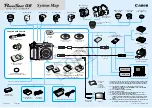
USER MANUAL
DIGITAL READOUT VISION 518
MT02_A31_B_VI518_GIVI_ENG rev. A
Pag. 17/32
Machining errors can derive from geometrical defects of the machine due to wear, lack of
linearity of the guides, coupling clearances between carriage and guide, badly distributed
weights, etc. If these errors are linear, i.e. proportional to the movement executed, they
can be compensated with the linear correction function.
The correction factor
CF
is calculated by the operator with the following formula:
MEASURED
DIMENSION
(measured with accuracy)
CF =
------------------------------------------------------
DIMENSION AS PER DRAWING
Let us suppose that a machining has been performed, moving the axis by 400.00 mm
(value shown on the display), but an error has been detected (positive or negative). For
instance, the measured piece is either longer or shorter than intended. That means:
A) 400.20 mm
the workpiece is longer with an error of 200 µm
B) 399.88 mm
the workpiece is shorter with an error of 120 µm
in case
A
CF =
400.20 : 400.00 = 1.0005
in case
B
CF =
399.88 : 400.00 = 0.9997
To compensate for these errors,
Press
3 0
1
.
0
0
0
0
0
0
Note.
The first digit on the display will flash.
To enter the correction factor on the axis,
use
and
to enter it
1
.
0
0
0
0
0
1 . 0 0 0 5
1
.
0
0
0
5
0
0
or:
0 . 9 9 9 7
0
.
9
9
9
7
0
0
All the movements performed on the axis will be compensated with the
CF
entered. At the
end of the procedure, the display will be enabled for counting.
LINEAR CORRECTION
F 30















































